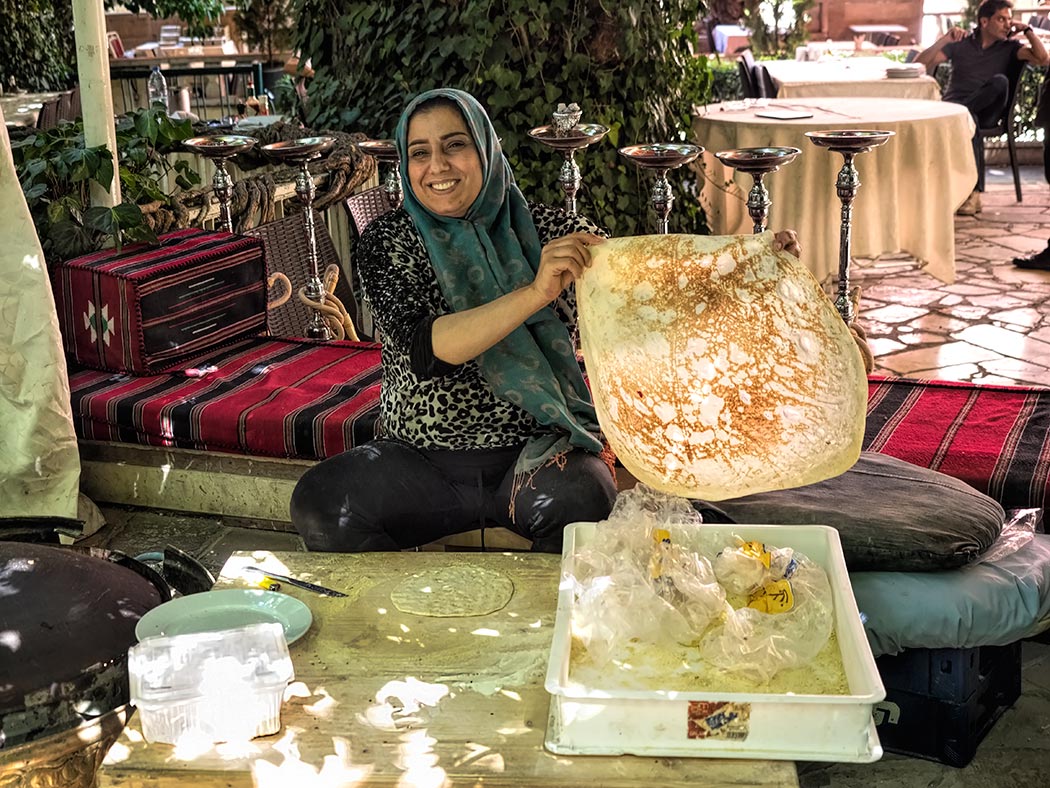Google “Lebanese flatbread” and you will find more than half a million web sites, but the lion’s share of them discuss thicker breads that lie somewhere between a Middle Eastern-style pita and an Indian naan. Having traveled extensively in Asia and, more recently the Middle East, I have eaten poori, chapati, parotha, roti, lavash, and even tortilla, in addition to pita and naan. But until I visited Lebanon, I had never tried Lebanese Saj. My first ever exposure to Saj was at a Lebanese restaurant in the Beqaa Valley, where a woman sat cross-legged on the floor, pressing out balls fresh dough made from very fine flour, water, and a dollop of olive oil.
Using fingers and the palms of her hands, she pressed the dough flat, pushing out toward the edges to make it increasingly flatter. When the dough was as thin as she could make it by pressing, she peeled it off her wooden table and began tossing and stretching it, using her fists like a pizza maker. When it was almost transparent – so thin I thought it would surely tear – she flipped it expertly onto a domed grill that looked like an upside-down wok (interestingly, also called a saj). A few seconds later she flipped it to allow both sides to brown, then deftly removed it and held the finished Lebanese saj flatbread up for me to see. It was fascinating to watch her work, but even better to sample the goods at lunch, which offered a myriad of sauces and condiments for dipping.

